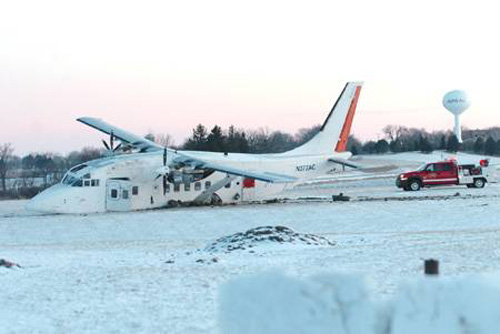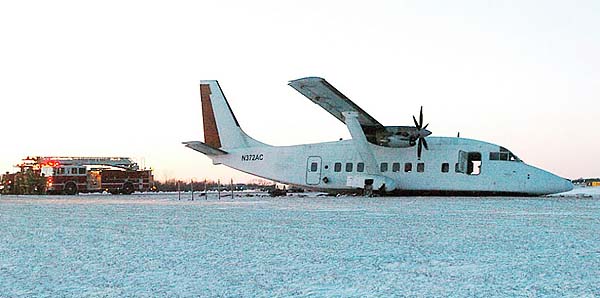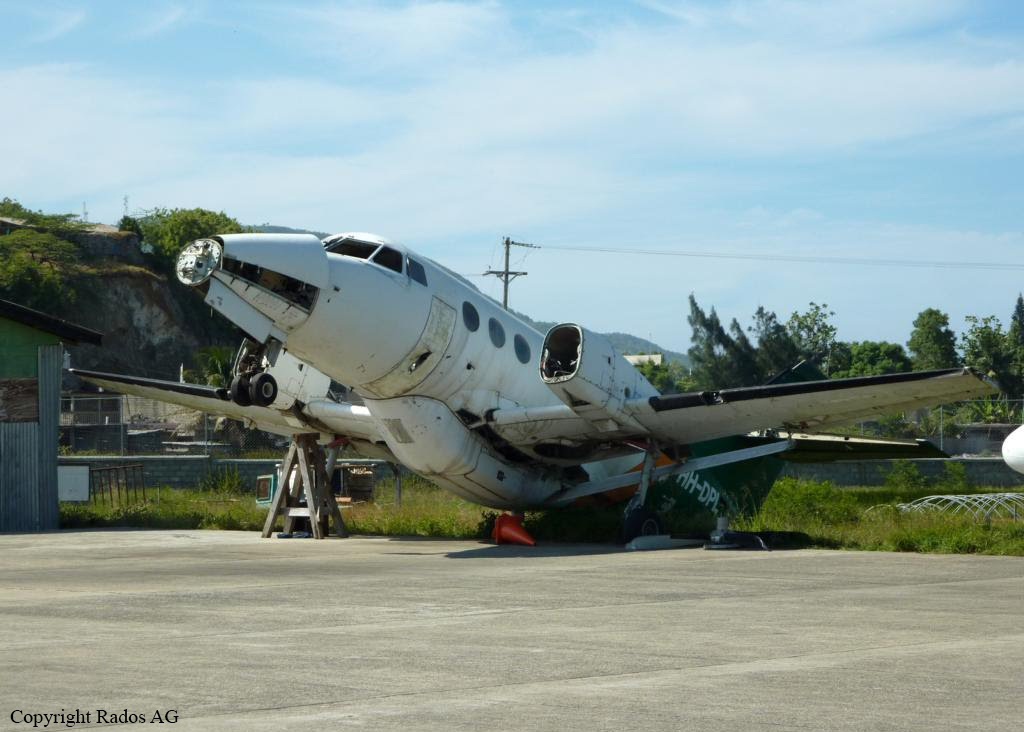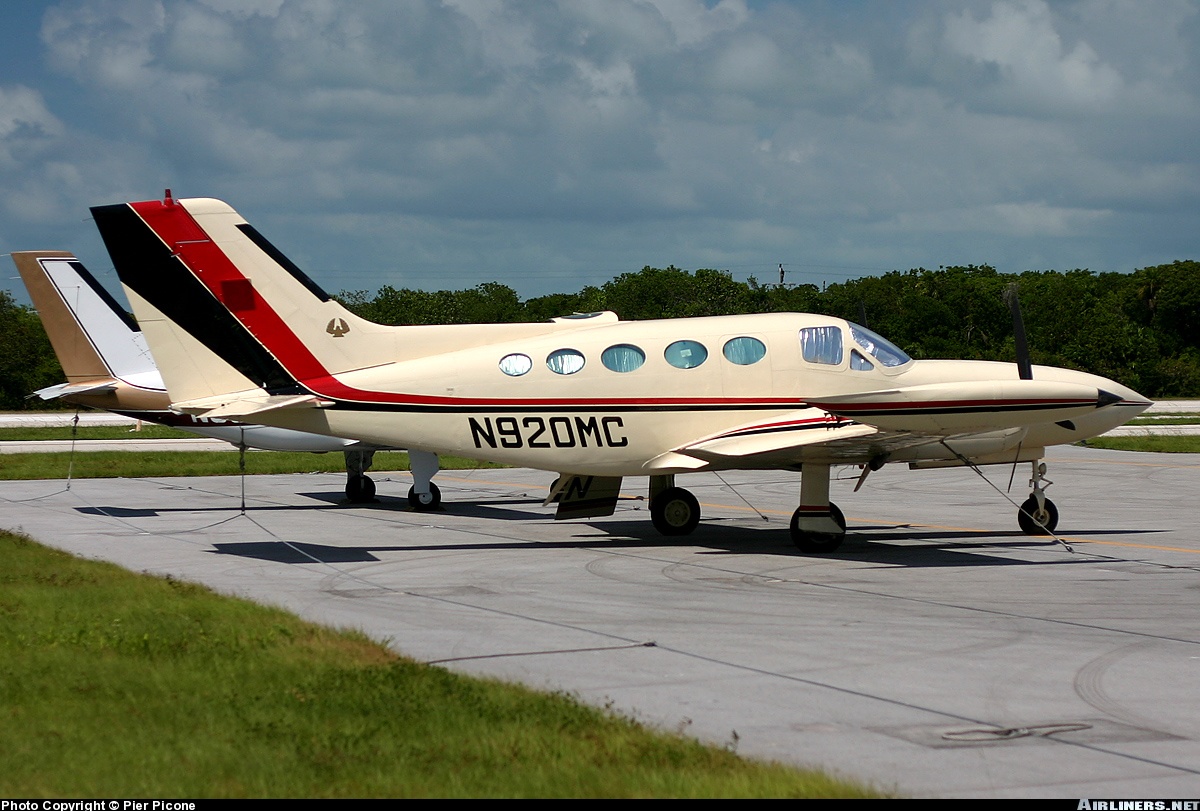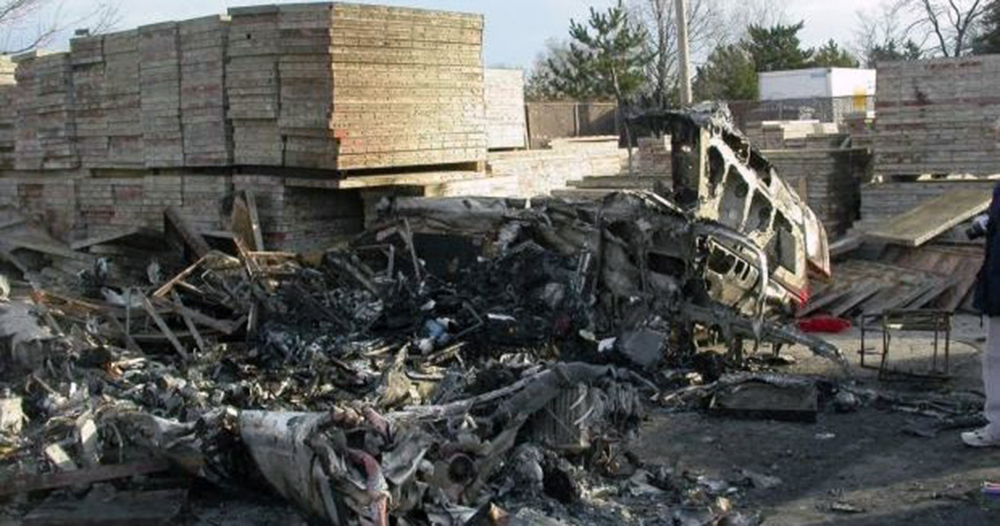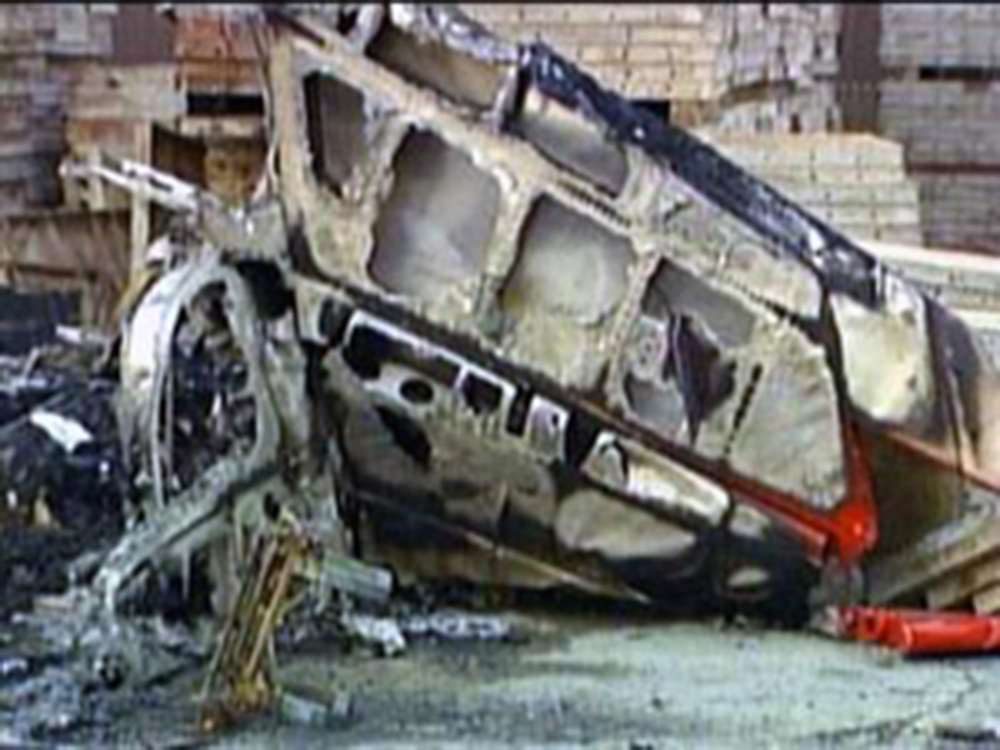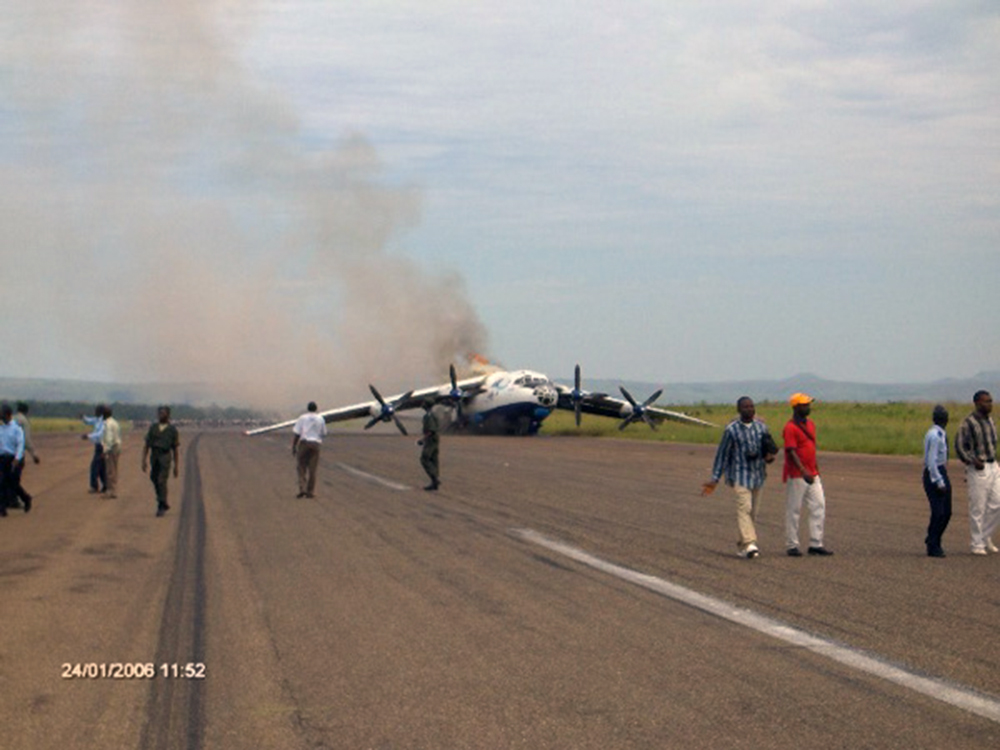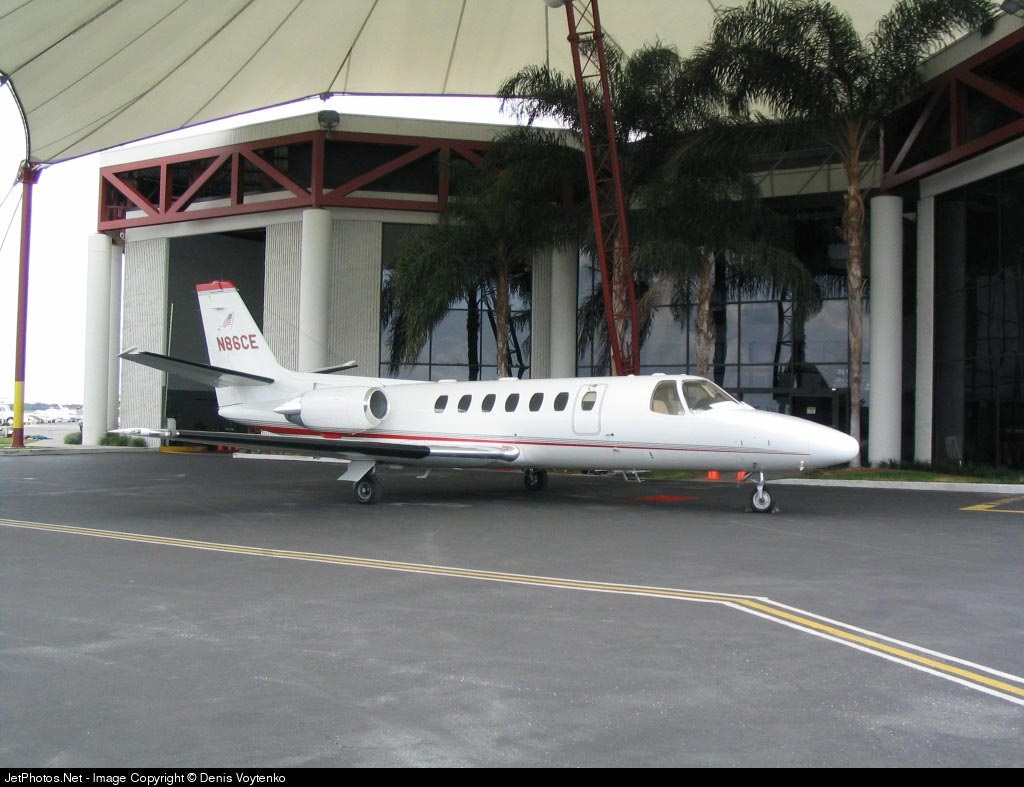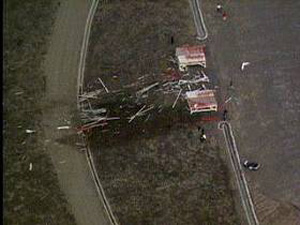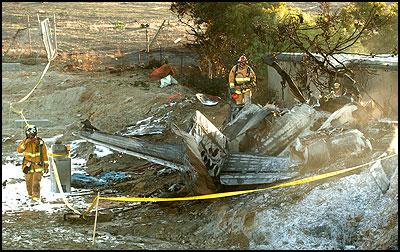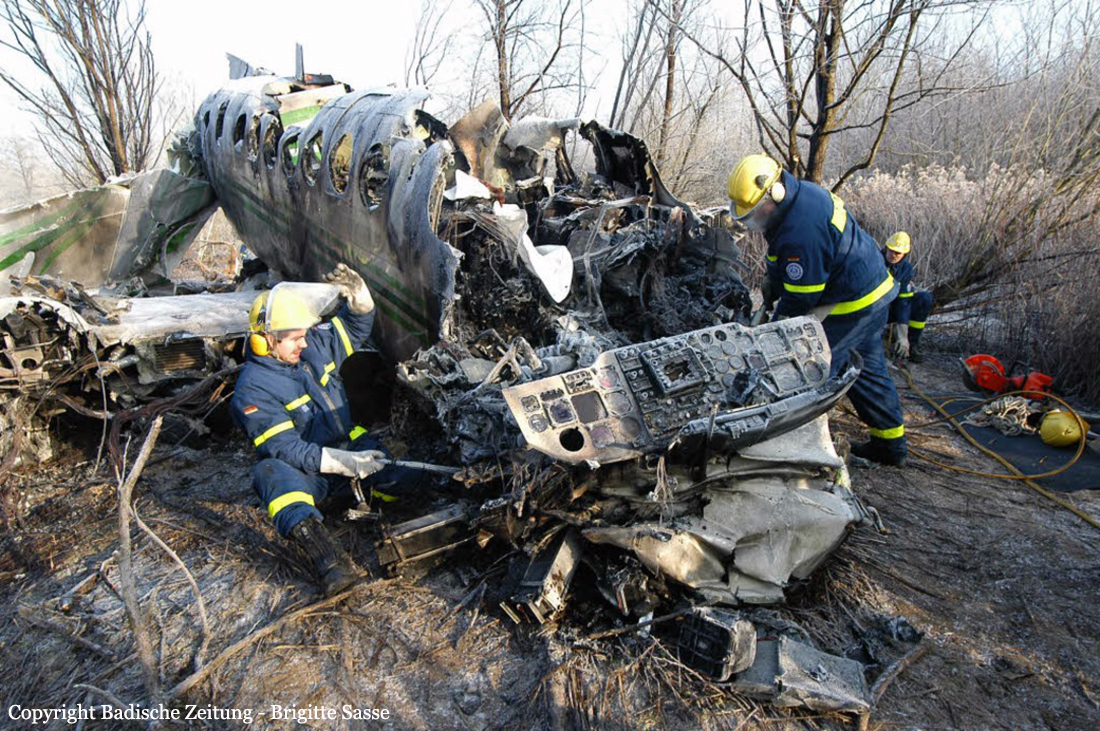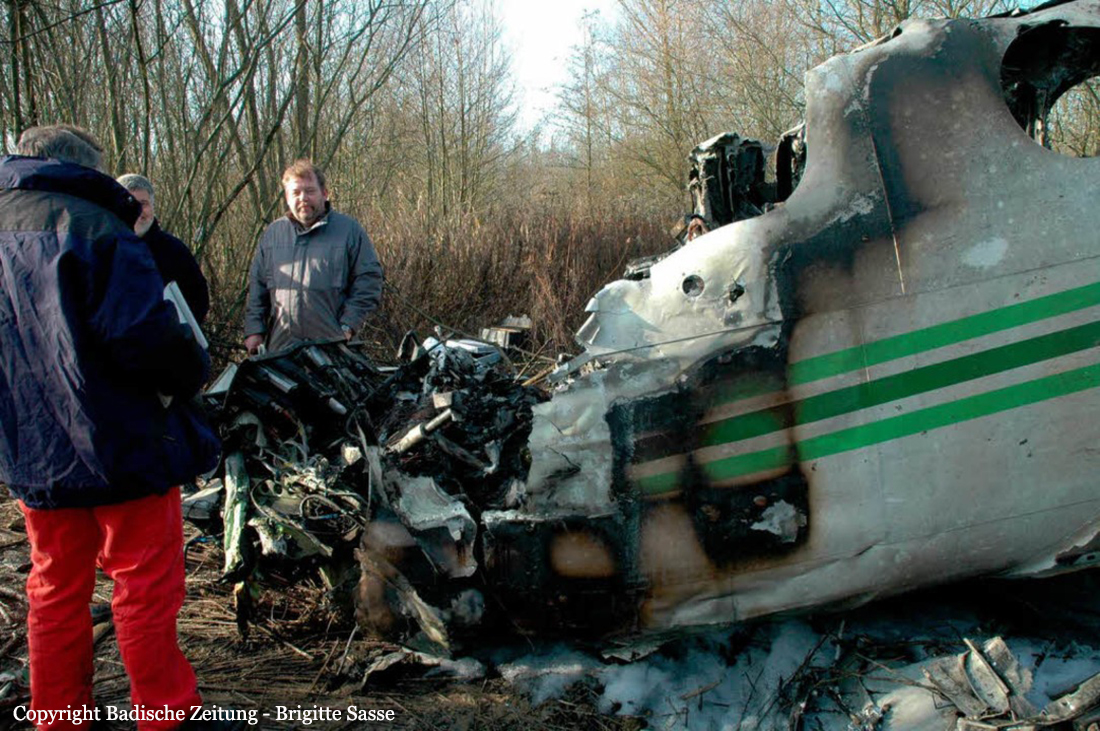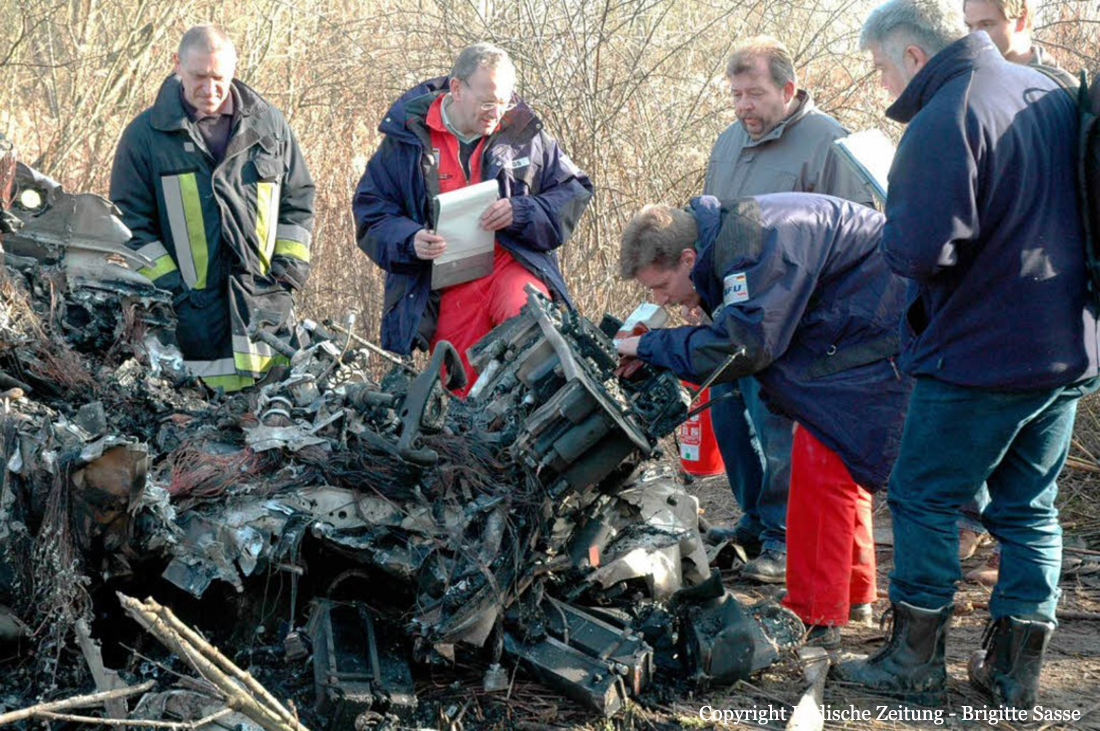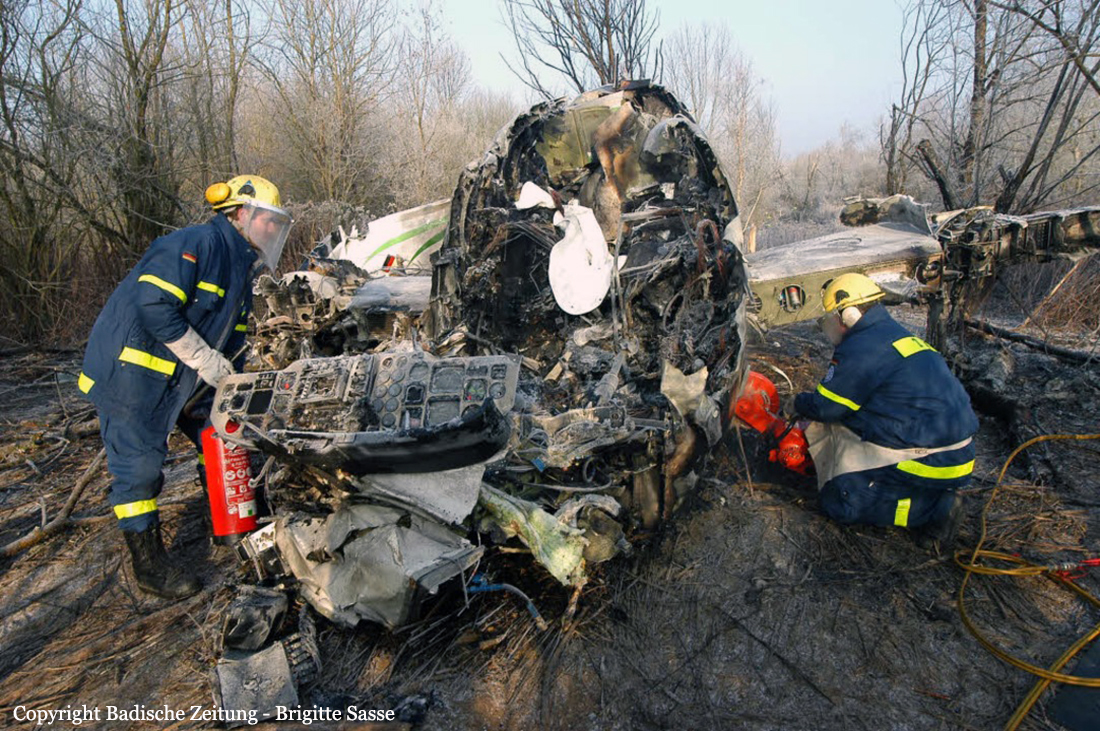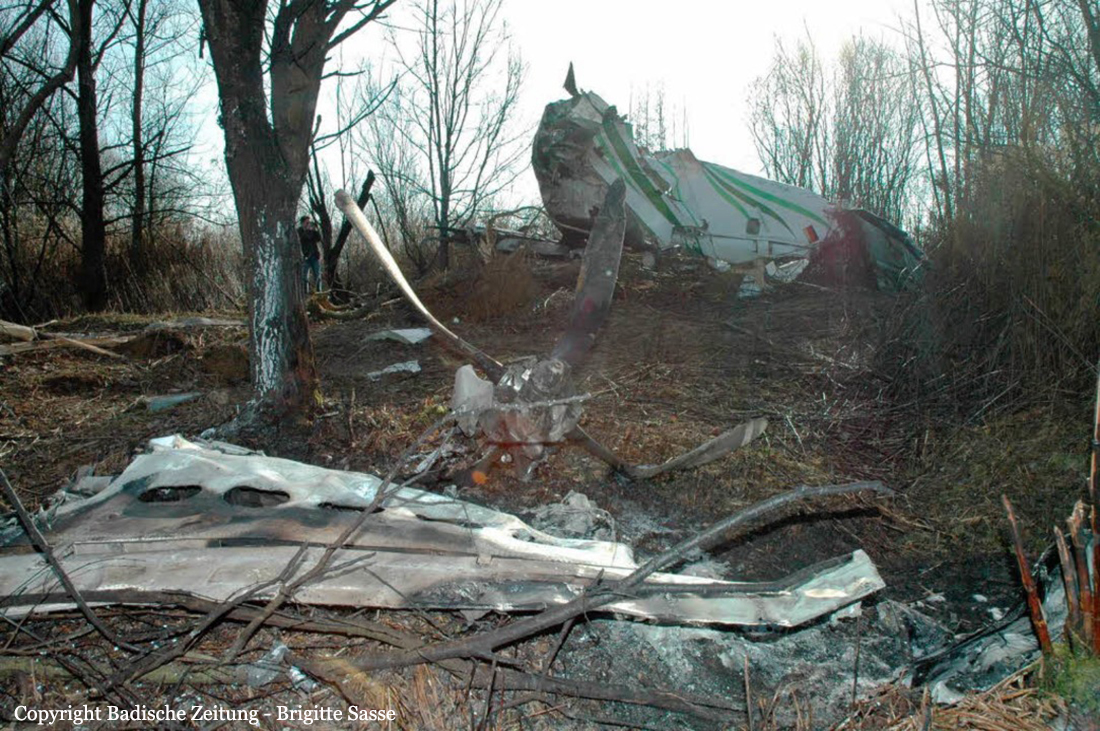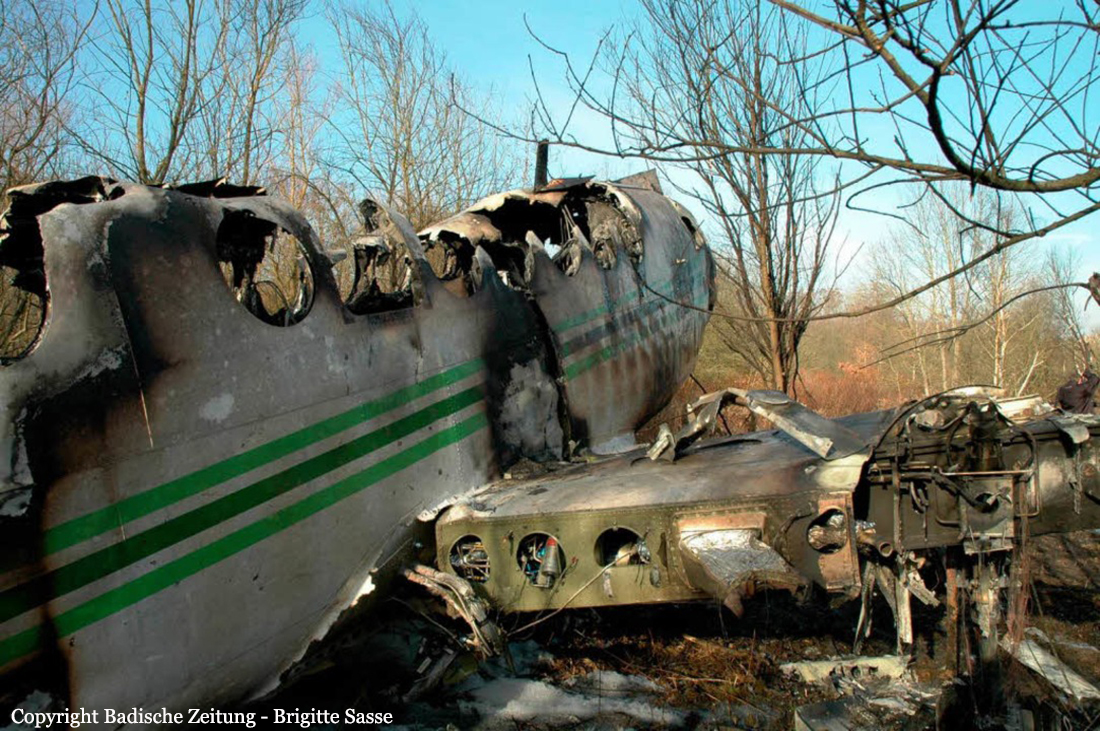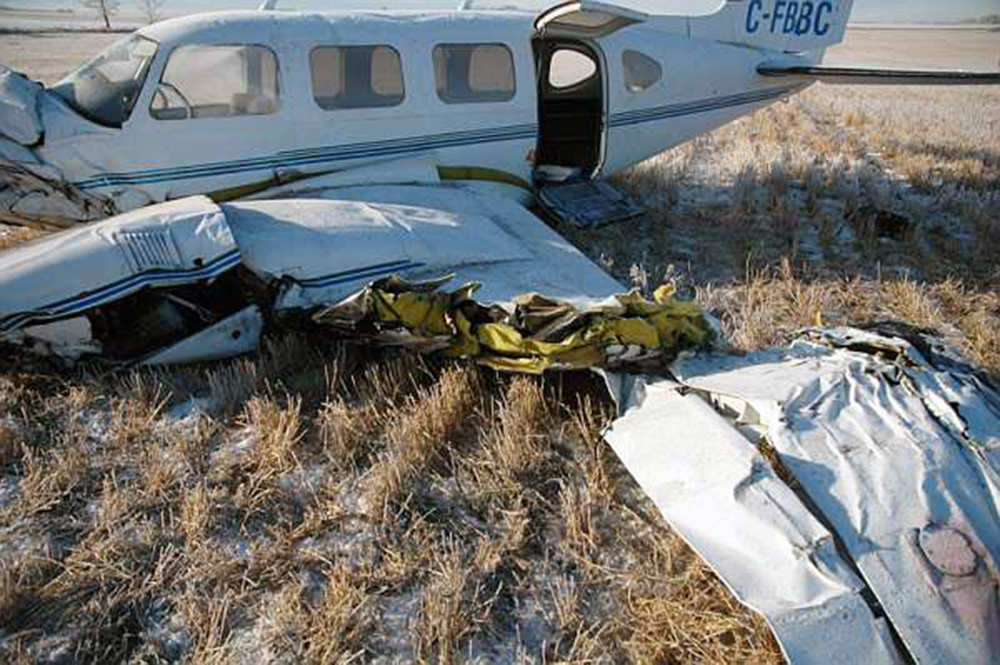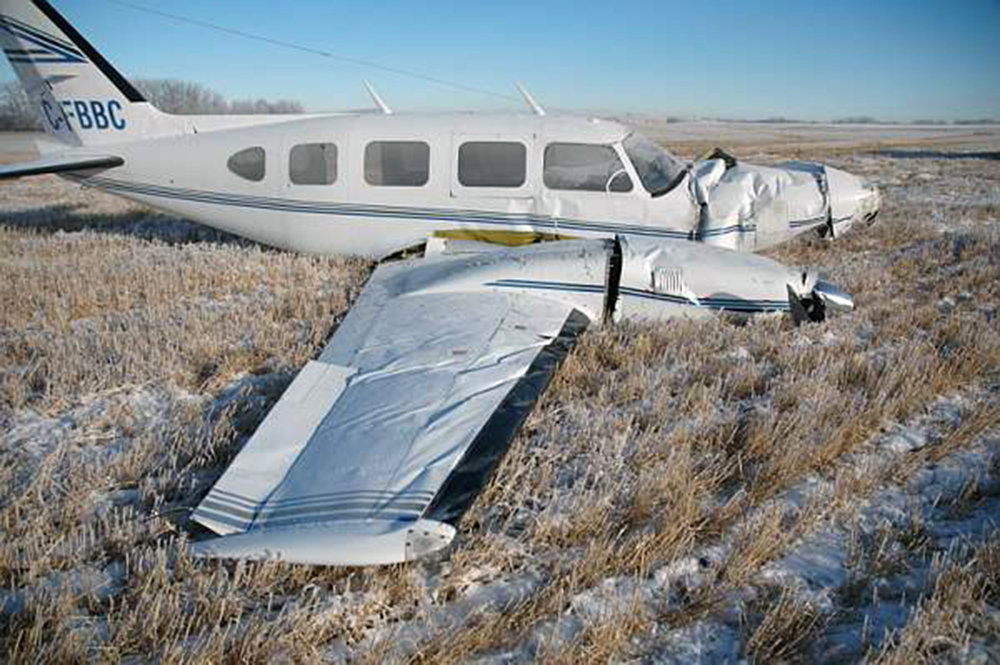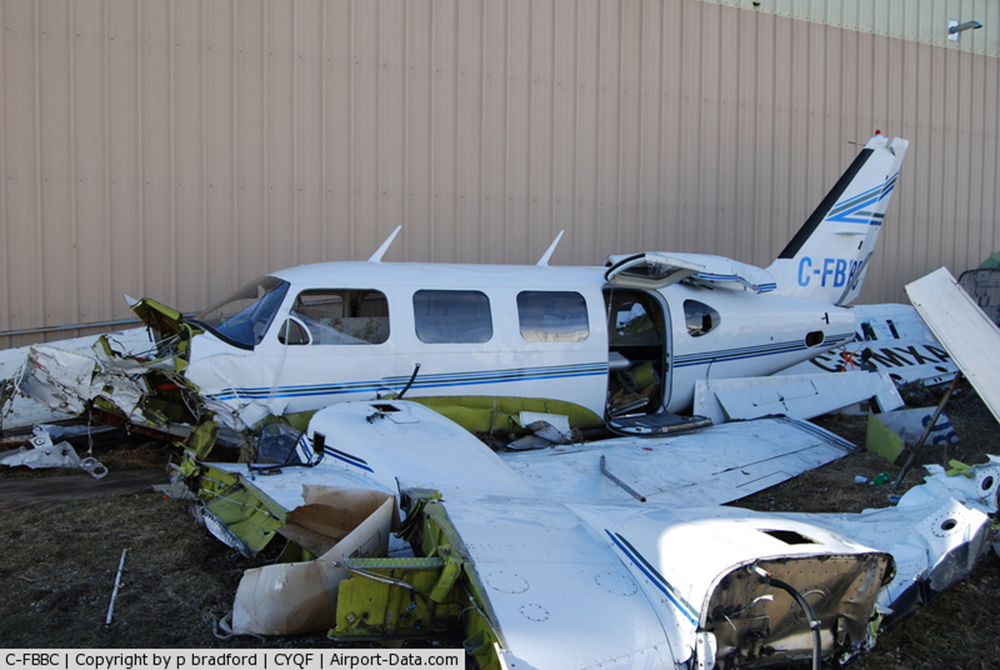Crash of a Short 360-300 in Watertown
Date & Time:
Feb 5, 2006 at 1654 LT
Registration:
N372AC
Survivors:
Yes
Schedule:
Milwaukee - Milwaukee
MSN:
3720
YOM:
1987
Crew on board:
2
Crew fatalities:
Pax on board:
1
Pax fatalities:
Other fatalities:
Total fatalities:
0
Captain / Total hours on type:
630.00
Copilot / Total hours on type:
122
Aircraft flight hours:
21996
Circumstances:
Prior to departure, both flight crews decided that they would join-up while in flight to take video and still pictures of each airplane. Both aircraft were Shorts Brothers SD-360-300 turboprop airplanes. While flying in formation, N3735W announced over the radio that they would turn right, toward N372AC, and descend. During the turn, N3735W's left wing impacted the left wing and engine of N372AC. After the collision, N372AC rolled to the left and pitched down significantly before the flight crew regained control of the airplane. After the collision, N372AC was losing hydraulic fluid and eventually had a complete hydraulic system failure. The airplane made an emergency landing at a nearby airport with its flaps retracted and its landing gear partially extended. The airplane overran the end of the runway, coming to rest about 100 feet from the departure threshold. White paint transfer markings and scrapes were observed on the left wing deice boot, the outboard side of the left engine cowling was crushed inboard, the left wing-strut leading edge was torn open and bent, and the lower fuselage skin, immediately forward of the landing gear wheel wells and stub wing, was torn from left to right, consistent with a propeller strike. N3735W impacted terrain and the airplane was destroyed during a subsequent ground fire. The flight crew and passenger were killed. The outboard three-quarters of the left wing was separated from the main wreckage and was not fire damaged. The upper wing surface had linear scrapes diagonally across the wing skin. The left aileron from N3735W was found on the runway where N372AC had landed.
Probable cause:
The other airplane's flight crew failure to maintain clearance while maneuvering during formation flight. Contributing to the accident was the decision of both flight crews to fly in formation.
Final Report:

